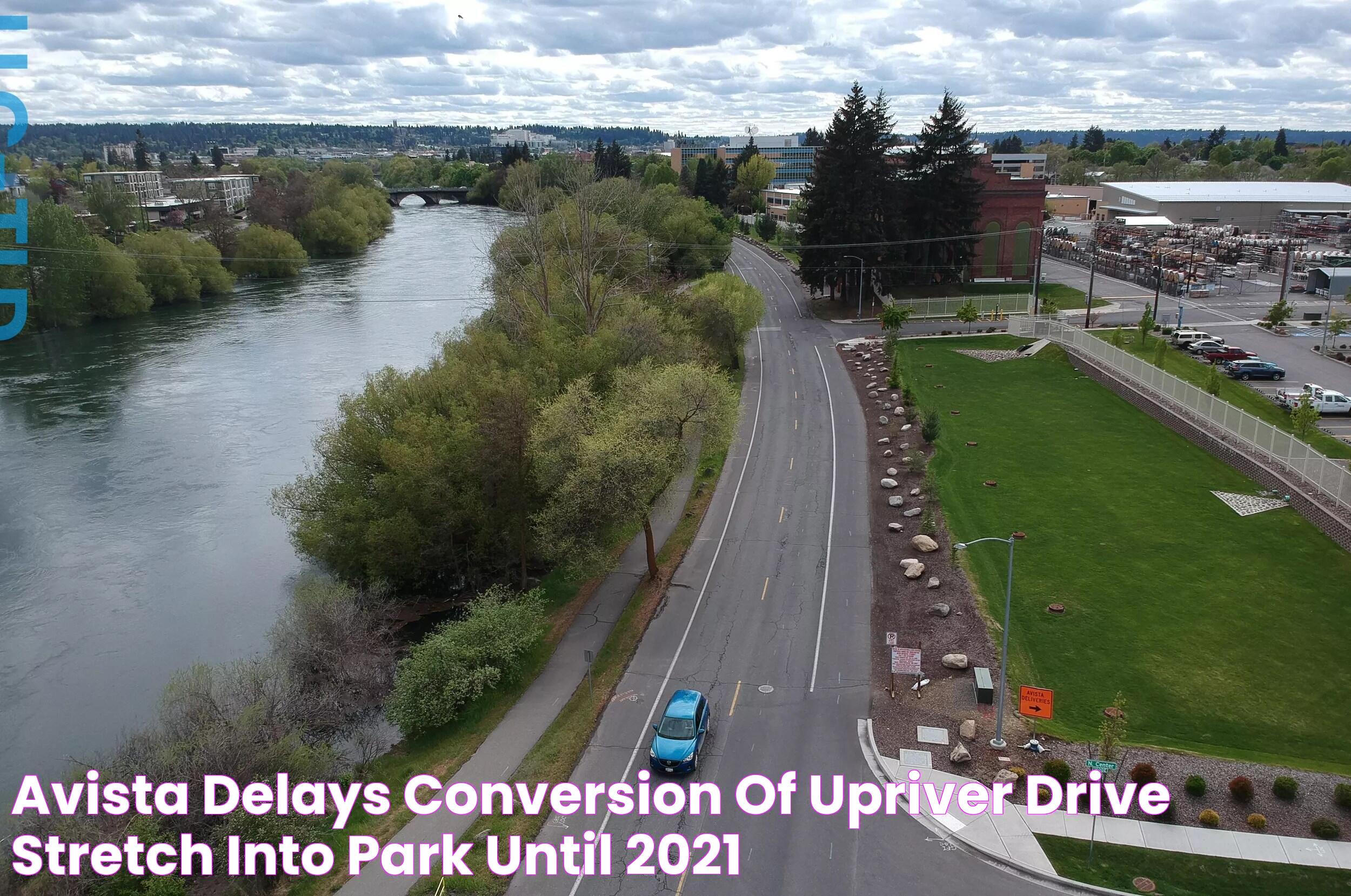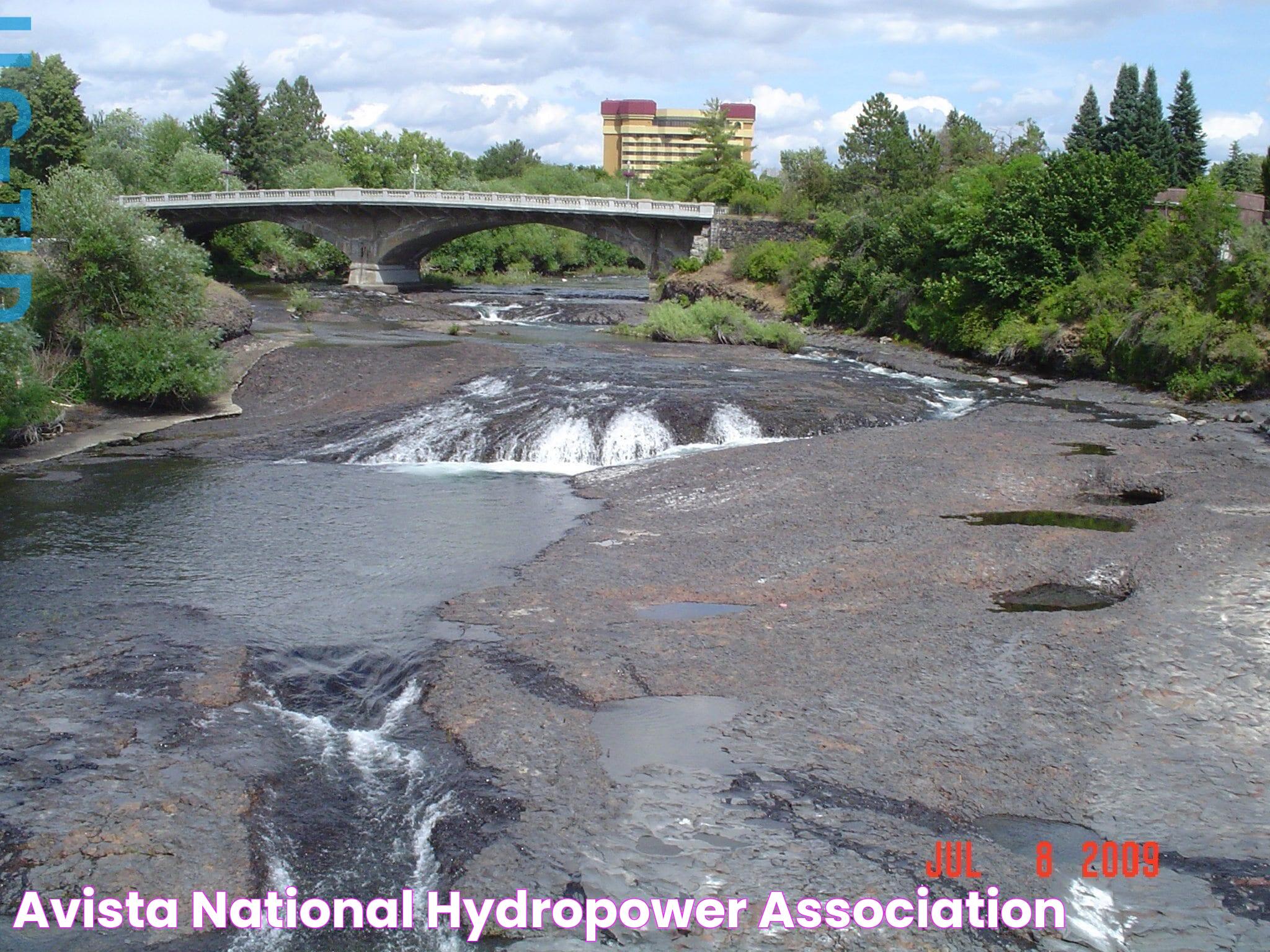Discover The Heavy Consequences: Avista National Park Damage Fines Unveiled
Avista National Park Damage Fine refers to the penalties imposed on individuals or entities for causing damage to the natural resources and infrastructure within Avista National Park. These fines are established to protect the park's delicate ecosystem and ensure its preservation for future generations. Fines vary depending on the severity of the damage and may include compensation for repair costs, restoration efforts, and legal fees.
Preserving Avista National Park is crucial for maintaining biodiversity, protecting endangered species, and providing recreational opportunities. The damage fines act as a deterrent against activities that could harm the park's resources. They also ensure that those responsible for causing damage are held accountable for their actions.
The main article will delve into the specific regulations and penalties associated with Avista National Park damage fines. It will discuss the importance of responsible behavior within the park and provide guidelines for visitors to avoid causing damage.
Read also:Before The Transformation Heidi Montags Journey Presurgery
Avista National Park Damage Fine
Avista National Park Damage Fine encompasses several key aspects that contribute to the protection and preservation of the park's natural resources:
- Deterrence: Fines discourage individuals from engaging in activities that could damage the park.
- Accountability: Fines hold individuals responsible for any damage they cause to the park's resources.
- Compensation: Fines provide funds for repair costs and restoration efforts.
- Protection: Fines help safeguard the park's biodiversity and endangered species.
- Education: Fines raise awareness about the importance of responsible behavior within the park.
- Enforcement: Fines are essential for enforcing the park's regulations and ensuring compliance.
These key aspects work together to ensure that Avista National Park remains a pristine and protected environment for present and future generations. Fines serve as a reminder of the importance of respecting and preserving our natural heritage.
1. Deterrence
Within the context of "avista national park damage fine," deterrence plays a crucial role in safeguarding the park's natural resources. Fines serve as a disincentive, discouraging individuals from engaging in activities that could potentially harm the park's ecosystem.
- Public Awareness: Fines raise public awareness about the consequences of damaging the park's resources. By publicizing the penalties associated with such actions, individuals are less likely to engage in harmful activities.
- Economic Consequences: Fines impose financial penalties on those who cause damage to the park. This acts as a deterrent, as individuals are less likely to engage in activities that could result in significant financial consequences.
- Legal Enforcement: Fines are backed by legal enforcement mechanisms. This ensures that individuals who violate park regulations are held accountable for their actions, further discouraging others from engaging in similar behaviors.
- Protection of Natural Resources: By deterring individuals from damaging the park's resources, fines contribute to the protection and preservation of the park's ecosystem. This ensures that future generations can continue to enjoy the park's natural beauty and biodiversity.
In conclusion, the deterrence aspect of "avista national park damage fine" plays a vital role in protecting the park's natural resources. Fines discourage individuals from engaging in harmful activities, promote responsible behavior, and ensure the long-term preservation of the park's ecosystem.
2. Accountability
Within the context of "avista national park damage fine," accountability plays a crucial role in ensuring the protection and preservation of the park's natural resources. Fines serve as a mechanism to hold individuals responsible for any damage they cause to the park's resources, promoting responsible behavior and fostering a sense of stewardship among visitors.
- Deterrence and Prevention:
Fines act as a deterrent against harmful activities, discouraging individuals from engaging in behaviors that could damage the park's resources. By holding individuals accountable for their actions, fines contribute to the prevention of damage and promote responsible behavior.
Read also:
- The Extraordinary Net Worth Of Kendra G Exploring Her Financial Success
- Reparation and Restoration:
Fines can be used to fund reparation and restoration efforts, ensuring that any damage caused to the park's resources is addressed and mitigated. This ensures that the park's ecosystem remains intact and healthy for future generations.
- Education and Awareness:
Fines can raise awareness about the importance of responsible behavior within the park. By publicizing the consequences of damaging the park's resources, fines educate individuals about the value of conservation and the need to protect the park's natural heritage.
- Legal Enforcement and Compliance:
Fines are backed by legal enforcement mechanisms, ensuring that individuals who violate park regulations are held accountable for their actions. This contributes to the overall compliance with park regulations and fosters a culture of respect for the park's resources.
In conclusion, the "Accountability: Fines hold individuals responsible for any damage they cause to the park's resources" aspect of "avista national park damage fine" is vital for maintaining the integrity and health of the park's ecosystem. Fines deter harmful behavior, promote responsible stewardship, fund restoration efforts, educate visitors, and ensure compliance with park regulations.
3. Compensation
Within the context of "avista national park damage fine," compensation plays a crucial role in addressing the consequences of damage caused to the park's natural resources. Fines levied for such damage provide funds that are allocated towards repair costs and restoration efforts, ensuring the park's ecosystem is restored and preserved for future generations.
- Restoration and Repair:
Fines provide financial resources for the restoration and repair of damaged natural resources within the park. This includes
trails, restoring damaged habitats, and repairing damaged infrastructure. These efforts are essential for maintaining the ecological integrity of the park and ensuring its continued enjoyment by visitors. - Conservation and Preservation:
Fines also contribute to conservation and preservation efforts within the park. Funds can be directed towards protecting endangered species, implementing sustainable land management practices, and supporting research initiatives aimed at preserving the park's biodiversity and natural heritage. By investing in conservation, fines play a vital role in ensuring the long-term health and resilience of the park's ecosystem.
- Education and Awareness:
A portion of the fines collected can be allocated towards educational programs and initiatives aimed at raising awareness about the importance of responsible behavior within the park. These programs educate visitors about the ecological value of the park, promote responsible recreation practices, and foster a sense of stewardship among park users. By investing in education, fines contribute to the long-term preservation of the park by
responsible visitors who understand and appreciate the importance of protecting the park's natural resources.
In summary, the "Compensation: Fines provide funds for repair costs and restoration efforts" aspect of "avista national park damage fine" is essential for maintaining the ecological integrity and preserving the natural heritage of the park. Fines provide financial resources that are invested in restoring damaged resources, supporting conservation efforts, and promoting responsible behavior among visitors. By investing in the park's future, fines ensure that Avista National Park remains a pristine and protected natural treasure for generations to come.
4. Protection
Within the context of "avista national park damage fine," the protection aspect highlights the crucial role that fines play in safeguarding the park's biodiversity and endangered species. By imposing financial penalties for causing damage to the park's natural resources, fines contribute to the conservation and preservation of the park's unique and fragile ecosystem.
- Deterrence of Harmful Activities:
Fines act as a deterrent against activities that could harm the park's biodiversity and endangered species. The threat of financial penalties discourages individuals from engaging in behaviors such as illegal hunting, poaching, or recreation, which can have devastating impacts on the park's wildlife and habitats.
- Funding for Conservation Efforts:
Fines collected can be allocated towards conservation efforts aimed at protecting and enhancing the park's biodiversity. This includes funding for habitat restoration, species monitoring, and anti-poaching initiatives. By investing in conservation, fines play a vital role in ensuring the long-term survival of the park's endangered species and the overall health of its ecosystem.
- Raising Awareness and Education:
Fines can also contribute to raising awareness about the importance of protecting the park's biodiversity and endangered species. Publicizing the consequences of damaging the park's natural resources educates visitors about the ecological value of the park and the need to respect and preserve its wildlife. This fosters a sense of stewardship among park users, promoting responsible behavior and encouraging support for conservation initiatives.
- Collaboration and Enforcement:
Fines are often part of a comprehensive approach to protecting the park's biodiversity and endangered species, involving collaboration between park rangers, law enforcement agencies, and conservation organizations. The imposition of fines provides legal backing to enforcement efforts, ensuring that individuals who violate park regulations are held accountable for their actions. This contributes to the overall effectiveness of conservation measures and deters potential offenders.
In summary, the "Protection: Fines help safeguard the park's biodiversity and endangered species" aspect of "avista national park damage fine" emphasizes the importance of financial penalties in conserving the park's unique and valuable natural heritage. Fines deter harmful activities, fund conservation efforts, raise awareness, and support enforcement measures, all of which contribute to the preservation and protection of the park's biodiversity and endangered species.
5. Education
Fines play a crucial role in educating the public about responsible behavior within Avista National Park. By imposing financial penalties for causing damage to the park's natural resources, fines serve as a powerful deterrent against harmful activities and promote a culture of conservation and respect for the environment.
Visitor education is a critical component of "avista national park damage fine" because it helps to prevent damage in the first place. When individuals are aware of the consequences of their actions, they are more likely to make responsible choices that protect the park's resources. Educational programs and initiatives funded by fines can effectively communicate the importance of responsible behavior, fostering a sense of stewardship among park visitors.
For example, educational campaigns can focus on raising awareness about the fragile nature of the park's ecosystem, the impact of littering and illegal camping on wildlife, and the importance of staying on designated trails to prevent erosion. By educating visitors about these issues, fines can contribute to a positive cycle of responsible behavior, leading to the long-term preservation of the park's natural beauty and ecological integrity.
In conclusion, the connection between "Education: Fines raise awareness about the importance of responsible behavior within the park." and "avista national park damage fine" is crucial for the effective protection and conservation of the park's natural resources. Fines serve as a powerful tool for educating visitors about responsible behavior, deterring harmful activities, and fostering a culture of environmental stewardship. By investing in education, "avista national park damage fine" contributes to the long-term preservation of the park's biodiversity, ecological integrity, and natural beauty.
6. Enforcement
Within the context of "avista national park damage fine," the enforcement aspect plays a crucial role in maintaining the integrity of the park's ecosystem and ensuring the safety and well-being of visitors.
- Deterrence:
Fines act as a deterrent against activities that could damage the park's natural resources or violate park regulations. The threat of financial penalties discourages individuals from engaging in harmful behaviors, such as littering, illegal camping, or damaging park property.
- Compliance:
Fines help ensure compliance with park regulations, fostering a culture of respect and responsibility among visitors. When individuals are aware of the consequences of violating park rules, they are more likely to adhere to them, minimizing the risk of damage to the park's resources and enhancing the overall visitor experience.
- Legal Authority:
Fines are backed by legal authority, providing park rangers and law enforcement officials with the power to enforce park regulations and hold individuals accountable for their actions. This legal framework ensures that fines are not merely suggestions but have real-world consequences, further promoting compliance and deterring harmful behavior.
- Resource Protection:
Fines play a vital role in protecting the park's natural resources by discouraging activities that could harm wildlife, damage vegetation, or pollute water sources. By enforcing park regulations and imposing fines for violations, the park can safeguard its delicate ecosystem and preserve its natural beauty for future generations.
In conclusion, the connection between "Enforcement: Fines are essential for enforcing the park's regulations and ensuring compliance." and "avista national park damage fine" underscores the importance of financial penalties in maintaining the health and integrity of the park. Fines deter harmful activities, promote compliance with park regulations, provide legal backing for enforcement efforts, and ultimately contribute to the preservation and protection of the park's natural resources.
FAQs on "avista national park damage fine"
This section provides concise answers to frequently asked questions (FAQs) regarding "avista national park damage fine." The FAQs are designed to address common concerns and misconceptions, offering clear and informative responses.
Question 1: What types of actions can result in damage fines within Avista National Park?
Fines can be imposed for a range of actions that cause damage to the park's natural resources or violate park regulations. Examples include littering, illegal camping, damaging park property, disturbing wildlife, and violating designated trail restrictions.
Question 2: How are damage fines determined?
The amount of a damage fine is determined based on the severity of the damage caused and the specific regulation(s) that were violated. Fines may vary depending on factors such as the extent of the damage, the rarity of the resource affected, and any prior violations by the individual.
Question 3: Who is responsible for paying damage fines?
Individuals who cause damage to the park's resources or violate park regulations are responsible for paying the associated fines. This includes both visitors and park employees.
Question 4: What are the consequences of not paying a damage fine?
Failure to pay a damage fine may result in additional penalties, such as suspension of park privileges, legal action, or referral to a collection agency. In some cases, unpaid fines may also affect an individual's credit rating.
Question 5: How are funds from damage fines used?
Funds collected from damage fines are primarily used to repair or restore damaged natural resources, support conservation efforts, and enhance visitor safety within Avista National Park.
Question 6: What steps can visitors take to avoid receiving a damage fine?
To avoid receiving a damage fine, visitors should familiarize themselves with and adhere to park regulations, practice responsible behavior, and report any observed violations to park authorities.
In summary, "avista national park damage fine" encompasses a range of penalties imposed for actions that harm the park's resources or violate park regulations. Understanding the types of actions that can result in fines, the factors that determine the fine amount, and the consequences of non-payment is crucial for visitors seeking to avoid penalties and contribute to the preservation of Avista National Park.
For further information or to report a violation, please contact the Avista National Park Visitor Center.
Tips to Avoid Avista National Park Damage Fines
To preserve and protect the natural beauty of Avista National Park, it is crucial for visitors to follow park regulations and avoid causing damage to its resources. Here are some essential tips to help you prevent damage fines and contribute to the conservation of this magnificent park:
Tip 1: Respect Designated Trails
Stay on designated trails to prevent damage to sensitive vegetation and wildlife habitats. Venturing off-trail can also lead to erosion and disturb wildlife.
Tip 2: Handle Waste Responsibly
Dispose of trash properly in designated bins or carry it out of the park. Littering not only detracts from the park's aesthetics but can also harm wildlife and pollute water sources.
Tip 3: Avoid Damaging Plants and Wildlife
Refrain from picking flowers, disturbing wildlife, or removing natural objects from the park. These actions can disrupt the delicate balance of the ecosystem.
Tip 4: Respect Park Property
Do not damage or vandalize park facilities, such as benches, signs, or restrooms. These structures are essential for visitor safety and enjoyment.
Tip 5: Camp Only in Designated Areas
Camping is permitted only in designated campgrounds. Illegal camping can damage vegetation, disturb wildlife, and create sanitation issues.
Tip 6: Observe Fire Regulations
Be mindful of fire regulations and only build campfires in designated areas. Never leave a fire unattended, and make sure to extinguish it completely before leaving.
Tip 7: Respect Wildlife
Observe wildlife from a safe distance, and do not feed or approach animals. Feeding wildlife can alter their natural behavior and make them dependent on humans.
Tip 8: Report Violations
If you witness any violations of park regulations, report them to a park ranger or the nearest visitor center. Your cooperation is vital in preserving the park for future generations.
By following these tips, you can help protect the natural resources of Avista National Park and avoid costly damage fines. Remember, every visitor has a responsibility to preserve and conserve this precious ecosystem for everyone to enjoy.
Conclusion
"Avista National Park Damage Fine" encompasses a system of penalties designed to protect and preserve the park's natural resources and visitor safety. Understanding the types of actions that can result in fines, the factors that determine the fine amount, and the consequences of non-payment is crucial for visitors seeking to avoid penalties and contribute to the park's conservation. By adhering to park regulations, practicing responsible behavior, and reporting violations, visitors can help safeguard the park's delicate ecosystem and ensure its enjoyment for generations to come.
Fines serve as a reminder of the importance of respecting and protecting our natural heritage. Avista National Park belongs to all of us, and it is our collective responsibility to preserve its beauty and biodiversity for future generations. By embracing a culture of responsible visitation, we can ensure that Avista National Park remains a pristine and awe-inspiring natural treasure.
Discover The World Of Uofl Blackboard: Your Gateway To Academic Excellence
The Ultimate Guide To IPERS: What It Is, How It Works, And Everything You Need To Know
Discover The Perfect Tommy Vercetti Profile Picture For Your Social Media


